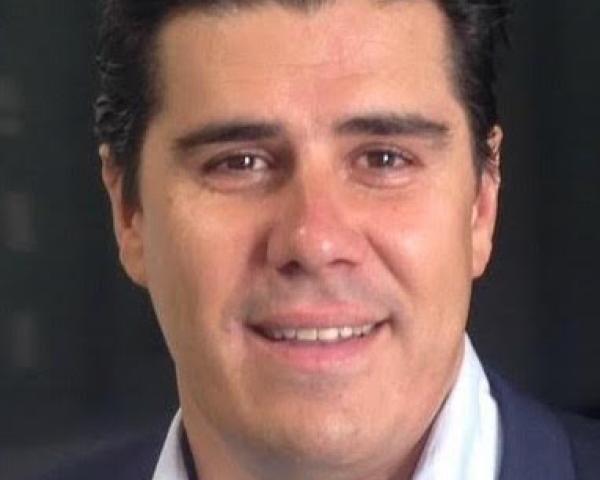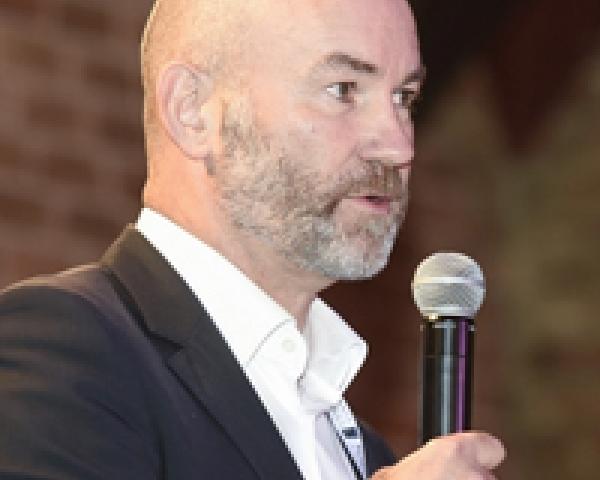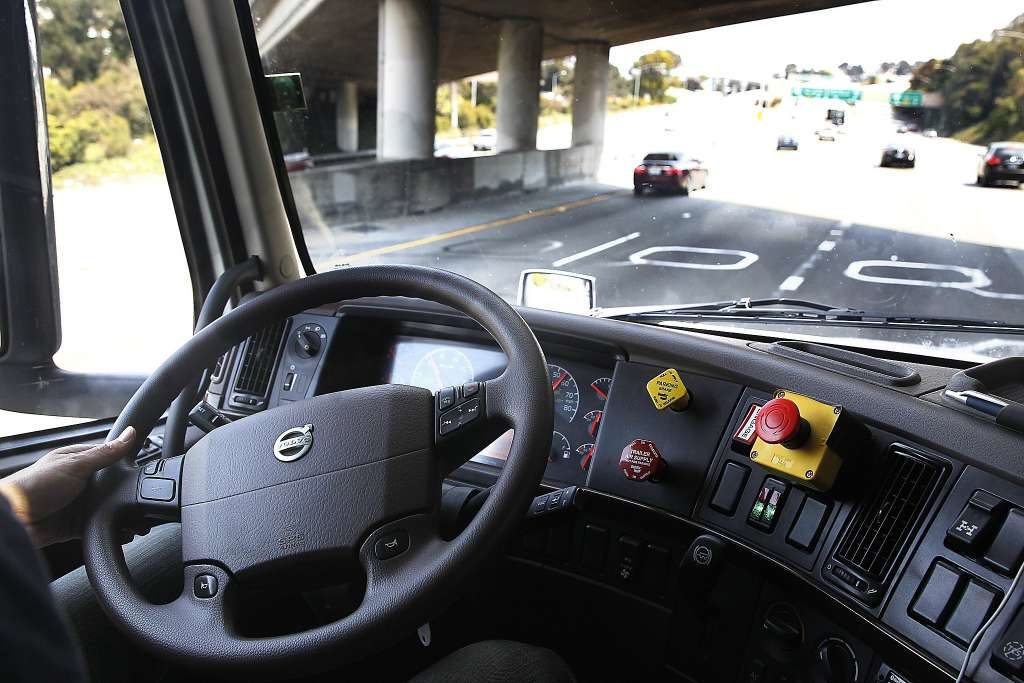The Challenges With Catastrophe Bonds
Cat bonds add a layer of complexity to reinsurance. Without technology, tracking all the details can be overwhelming.

Cat bonds add a layer of complexity to reinsurance. Without technology, tracking all the details can be overwhelming.

Get Involved
Our authors are what set Insurance Thought Leadership apart.
|
Partner with us
We’d love to talk to you about how we can improve your marketing ROI.
|

Grégory Moliner is CEO of Effisoft USA, an international reinsurance software vendor.
Lemonade has built a full-stack insurance model from the ground up. This is NOT a mobile app sitting on top of traditional insurance.

 I trust you, you trust me.
Insurance didn’t start out badly. When you look back in history, there are many examples of civilizations and societies supporting each other. Looking out for each other is natural behavior.
This is what insurance is meant to be: mutuality in the pooling of shared risk.
Sadly, the industry has lost its way with the evolution of mass scale personal lines in the 20th century. The profit motive has gotten in the way of trust; the insured and the insurer are both chasing the same dollars.
And now, their interests are no longer mutual but are misaligned. The insured wants a helping hand and to be “made whole.” The insurer wants to satisfy its duty to shareholders.
With a very high cost of sale and administration overhead (and little that can be done to reduce it), the insurer is motivated to minimize the amount it pays in claims.
See also: Be Afraid of These 4 Startups
It’s an unfair relationship from the customer’s perspective. The customer has paid the premium and yet has to prove a claim to get what is rightfully hers. No amount of technology can obviate this fundamental failing of today’s insurance business model.
And that is why the launch of Lemonade is so significant!
I trust you, you trust me.
Insurance didn’t start out badly. When you look back in history, there are many examples of civilizations and societies supporting each other. Looking out for each other is natural behavior.
This is what insurance is meant to be: mutuality in the pooling of shared risk.
Sadly, the industry has lost its way with the evolution of mass scale personal lines in the 20th century. The profit motive has gotten in the way of trust; the insured and the insurer are both chasing the same dollars.
And now, their interests are no longer mutual but are misaligned. The insured wants a helping hand and to be “made whole.” The insurer wants to satisfy its duty to shareholders.
With a very high cost of sale and administration overhead (and little that can be done to reduce it), the insurer is motivated to minimize the amount it pays in claims.
See also: Be Afraid of These 4 Startups
It’s an unfair relationship from the customer’s perspective. The customer has paid the premium and yet has to prove a claim to get what is rightfully hers. No amount of technology can obviate this fundamental failing of today’s insurance business model.
And that is why the launch of Lemonade is so significant!
 Insurance reinvented
About a month ago, it was my privilege to have some time with Daniel Schreiber, the CEO and co-founder of Lemonade. We talked about the launch of Lemonade and the reasons for taking the hardest route to get a license in New York. We discussed the things that needed to change in the industry, and Daniel explained the philosophy and motivation behind Lemonade.
Next month, I plan to write a longer piece with Daniel on the company's business model and tech. With his permission, I will share some of the detail behind Lemonade, which is, quite frankly, awesome, mind-blowing and game-changing!
And if that doesn’t whet your appetite, take a look at these videos on YouTube:
The thing to know about Lemonade is that it has built a full-stack insurance model from the ground up.
This is NOT a mobile app sitting on top of traditional insurance. That’s what you get when you ask a bunch of people to find a new way to drive a nail into a piece of wood. If those people have only ever used a hammer, the chances are their solution will be kind of like a hammer.
See also: The Insurance Renaissance (Part 1)
This innovation dilemma is not a problem unique to insurance. The incumbents in all industries have shown it’s difficult to innovate from within. That's why it took an Amazon to reinvent shopping, PayPal to change the game on payments and AirBnB and Uber to disrupt in their respective markets. (See this great article on Daily Fintech about the seven acts in the creative destruction play.)
Insurance reinvented
About a month ago, it was my privilege to have some time with Daniel Schreiber, the CEO and co-founder of Lemonade. We talked about the launch of Lemonade and the reasons for taking the hardest route to get a license in New York. We discussed the things that needed to change in the industry, and Daniel explained the philosophy and motivation behind Lemonade.
Next month, I plan to write a longer piece with Daniel on the company's business model and tech. With his permission, I will share some of the detail behind Lemonade, which is, quite frankly, awesome, mind-blowing and game-changing!
And if that doesn’t whet your appetite, take a look at these videos on YouTube:
The thing to know about Lemonade is that it has built a full-stack insurance model from the ground up.
This is NOT a mobile app sitting on top of traditional insurance. That’s what you get when you ask a bunch of people to find a new way to drive a nail into a piece of wood. If those people have only ever used a hammer, the chances are their solution will be kind of like a hammer.
See also: The Insurance Renaissance (Part 1)
This innovation dilemma is not a problem unique to insurance. The incumbents in all industries have shown it’s difficult to innovate from within. That's why it took an Amazon to reinvent shopping, PayPal to change the game on payments and AirBnB and Uber to disrupt in their respective markets. (See this great article on Daily Fintech about the seven acts in the creative destruction play.)
 Lemonade is truly different
Here's why:
Lemonade is truly different
Here's why:
Get Involved
Our authors are what set Insurance Thought Leadership apart.
|
Partner with us
We’d love to talk to you about how we can improve your marketing ROI.
|

Rick Huckstep is chairman of the Digital Insurer, a keynote speaker and an adviser on digital insurance innovation. Huckstep publishes insight on the world of insurtech and is recognized as a Top 10 influencer.
Most insurers have a mobile app, but 20% rate the customer experience as a six or below on a 10-point scale. It's time to get serious.

Get Involved
Our authors are what set Insurance Thought Leadership apart.
|
Partner with us
We’d love to talk to you about how we can improve your marketing ROI.
|

Stephanie Trunzo is the Chief Digital Officer and COO for PointSource, where she has helped doubled revenue year over year 3 years running, making the Inc 5000 the last two consecutive years. Trunzo has been instrumental in reinventing this IBM Premier Business Partner into a top mobile creative force.
When a whole lot of jobs in a bunch of industries appear to be disappearing, we workers' comp folks need to take notice.

 Ford is heavily involved and plans to have a self-driving car on the market in five years. Sign me up! As someone who spends way too much time behind the wheel, I’m all over this. Work, read, etc. while being transported to client meetings? Heck, yes!
The giant ride-sharing company is also behind Otto, an effort to automate long-haul trucking.
Photo below from the SF Chronicle//Testing of a Volvo truck by engineer Nic Munley.
Ford is heavily involved and plans to have a self-driving car on the market in five years. Sign me up! As someone who spends way too much time behind the wheel, I’m all over this. Work, read, etc. while being transported to client meetings? Heck, yes!
The giant ride-sharing company is also behind Otto, an effort to automate long-haul trucking.
Photo below from the SF Chronicle//Testing of a Volvo truck by engineer Nic Munley.
 Unlike competitor Lyft, Uber doesn’t seem to care that its current drivers are going to be left ride-less in the not-too-distant future, nor is Uber bothered that,
Unlike competitor Lyft, Uber doesn’t seem to care that its current drivers are going to be left ride-less in the not-too-distant future, nor is Uber bothered that,
Get Involved
Our authors are what set Insurance Thought Leadership apart.
|
Partner with us
We’d love to talk to you about how we can improve your marketing ROI.
|

Joseph Paduda, the principal of Health Strategy Associates, is a nationally recognized expert in medical management in group health and workers' compensation, with deep experience in pharmacy services. Paduda also leads CompPharma, a consortium of pharmacy benefit managers active in workers' compensation.
Lemonade is the real deal in insurance disruption. It offers lessons for any innovator, as well as for any incumbent.

Get Involved
Our authors are what set Insurance Thought Leadership apart.
|
Partner with us
We’d love to talk to you about how we can improve your marketing ROI.
|

Amy Radin is a transformation strategist, a scholar-practitioner at Columbia University and an executive adviser.
She partners with senior executives to navigate complex organizational transformations, bringing fresh perspectives shaped by decades of experience across regulated industries and emerging technology landscapes. As a strategic adviser, keynote speaker and workshop facilitator, she helps leaders translate ambitious visions into tangible results that align with evolving stakeholder expectations.
At Columbia University's School of Professional Studies, Radin serves as a scholar-practitioner, where she designed and teaches strategic advocacy in the MS Technology Management program. This role exemplifies her commitment to bridging academic insights with practical business applications, particularly crucial as organizations navigate the complexities of Industry 5.0.
Her approach challenges traditional change management paradigms, introducing frameworks that embrace the realities of today's business environment – from AI and advanced analytics to shifting workforce dynamics. Her methodology, refined through extensive corporate leadership experience, enables executives to build the capabilities needed to drive sustainable transformation in highly regulated environments.
As a member of the Fast Company Executive Board and author of the award-winning book, "The Change Maker's Playbook: How to Seek, Seed and Scale Innovation in Any Company," Radin regularly shares insights that help leaders reimagine their approach to organizational change. Her thought leadership draws from both her scholarly work and hands-on experience implementing transformative initiatives in complex business environments.
Previously, she held senior roles at American Express, served as chief digital officer and one of the corporate world’s first chief innovation officers at Citi and was chief marketing officer at AXA (now Equitable) in the U.S.
Radin holds degrees from Wesleyan University and the Wharton School.
To explore collaboration opportunities or learn more about her work, visit her website or connect with her on LinkedIn.
The eight winners of the SMA Innovation in Action Awards include Figo Pet Insurance, Meteo, Motorists Insurance Group and Texas Mutual.

Get Involved
Our authors are what set Insurance Thought Leadership apart.
|
Partner with us
We’d love to talk to you about how we can improve your marketing ROI.
|

Deb Smallwood, the founder of Strategy Meets Action, is highly respected throughout the insurance industry for strategic thinking, thought-provoking research and advisory skills. Insurers and solution providers turn to Smallwood for insight and guidance on business and IT linkage, IT strategy, IT architecture and e-business.
We can go enjoy a smoke and a Sudoku on the bank of the nearest tar pit and wait for a meteor to end our pain and frustration, or...

Get Involved
Our authors are what set Insurance Thought Leadership apart.
|
Partner with us
We’d love to talk to you about how we can improve your marketing ROI.
|

Mike Manes was branded by Jack Burke as a “Cajun Philosopher.” He self-defines as a storyteller – “a guy with some brain tissue and much more scar tissue.” His organizational and life mantra is Carpe Mañana.
Technology is used to hide data traffic from would-be hackers, but it also hides data from the latest, hot-selling security tools.

Get Involved
Our authors are what set Insurance Thought Leadership apart.
|
Partner with us
We’d love to talk to you about how we can improve your marketing ROI.
|

Byron Acohido is a business journalist who has been writing about cybersecurity and privacy since 2004, and currently blogs at LastWatchdog.com.
What if, on Jan, 1, 2017, you awoke to find that most commercial polices were being sold online through digital agencies?

Get Involved
Our authors are what set Insurance Thought Leadership apart.
|
Partner with us
We’d love to talk to you about how we can improve your marketing ROI.
|

Denise Garth is senior vice president, strategic marketing, responsible for leading marketing, industry relations and innovation in support of Majesco's client-centric strategy.
Blockchain promises exponential efficiencies or exponential deficiencies. But we have the knowledge to get it right this time.

Get Involved
Our authors are what set Insurance Thought Leadership apart.
|
Partner with us
We’d love to talk to you about how we can improve your marketing ROI.
|

Daniel R. Robles, PE, MBA is the founder of The Ingenesist Project (TIP), whose objective is to research, develop and publish applications of blockchain technology related to the financial services and infrastructure engineering industries.